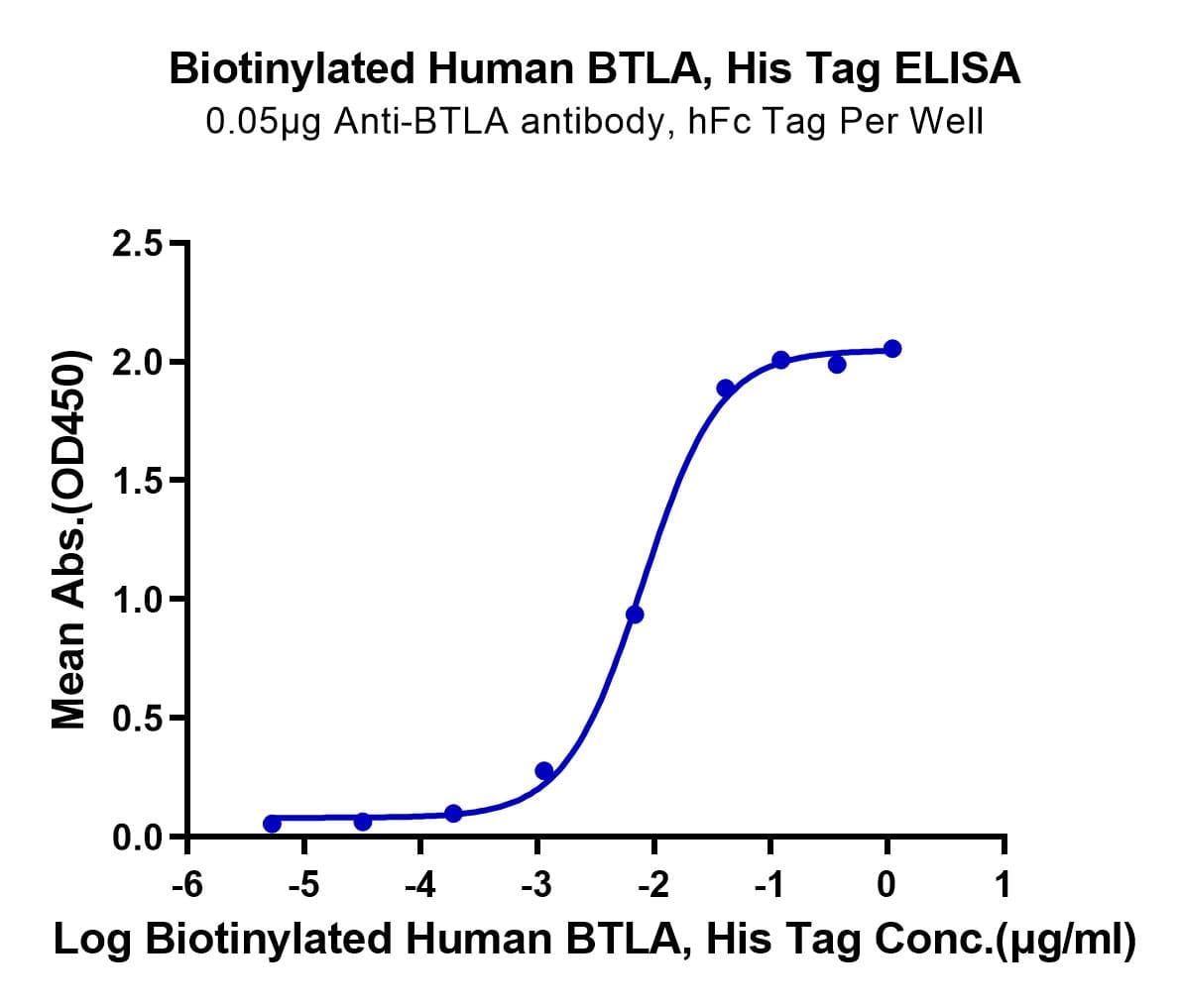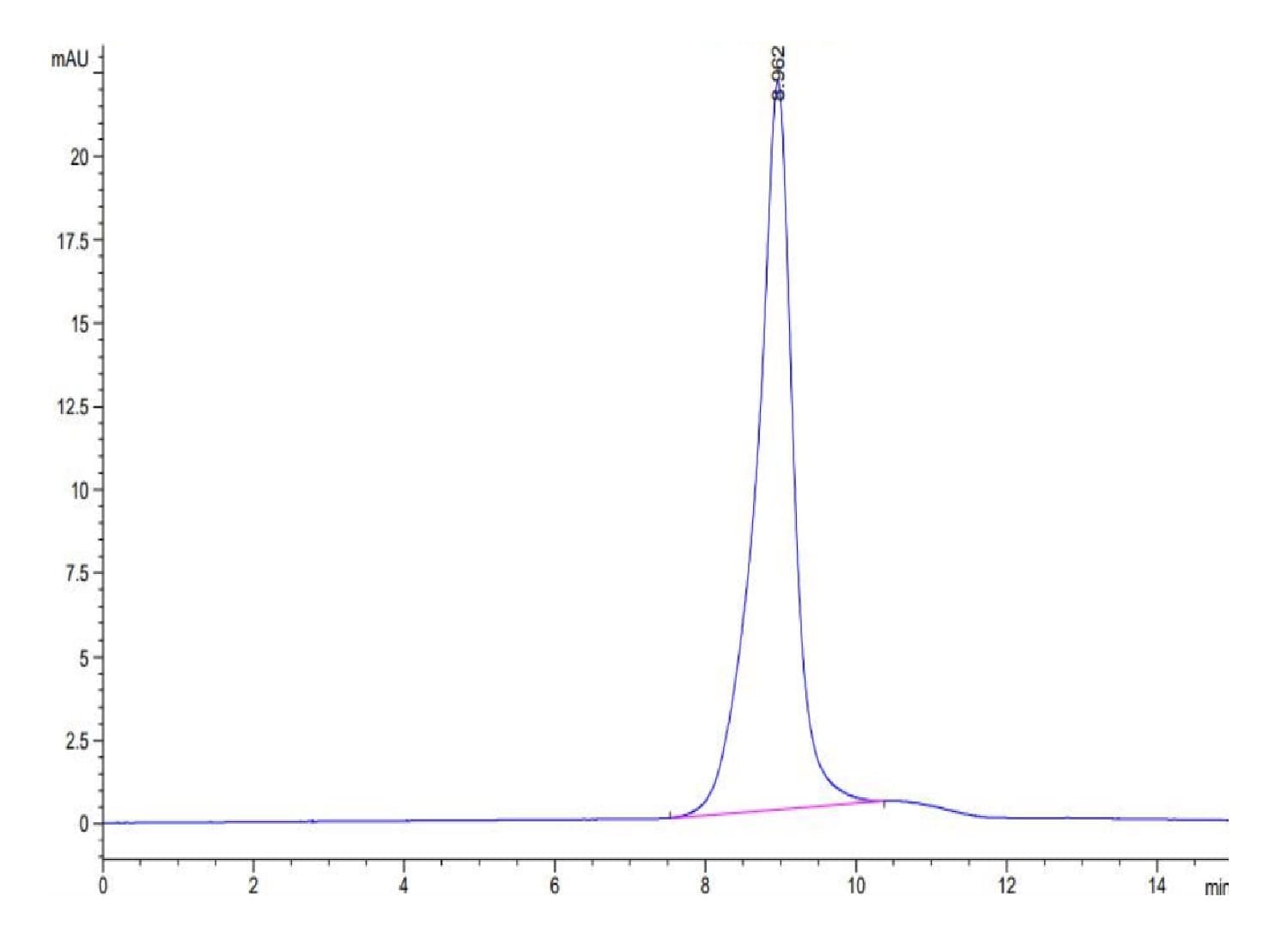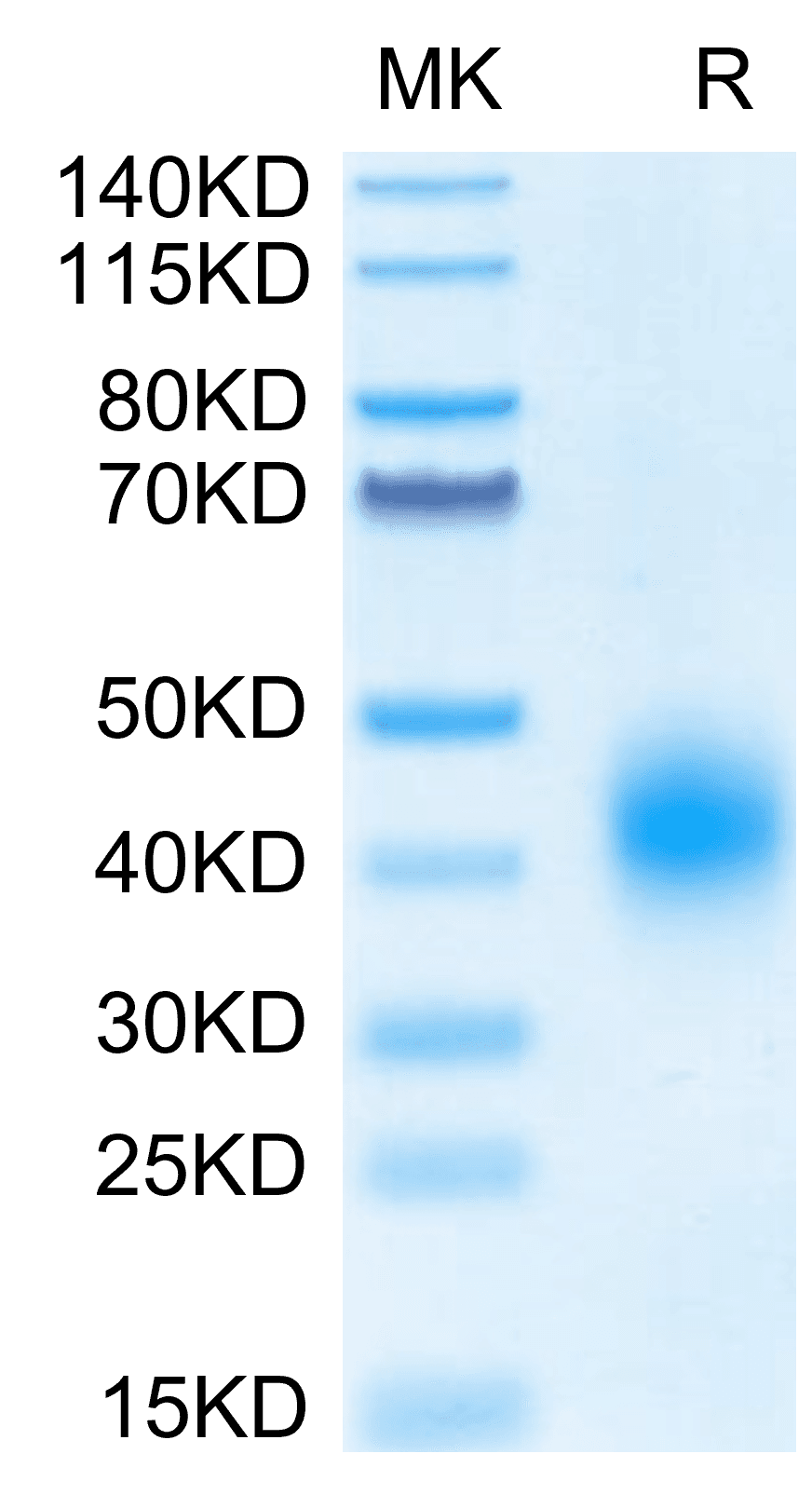| Weight | 1 lbs |
|---|---|
| Dimensions | 9 × 5 × 2 in |
| express system | HEK293 |
| product tag | C-His-Avi |
| purity | > 95% as determined by Tris-Bis PAGE;> 95% as determined by HPLC |
| background | B- and T-lymphocyte attenuator (BTLA; CD272) is a 35 kDa type I transmembrane glycoprotein in the CD28 family of T cell costimulatory molecules. BTLA is a inhibitory receptor on lymphocytes that negatively regulates antigen receptor signaling via PTPN6/SHP-1 and PTPN11/SHP-2. BTLA may interact in cis (on the same cell) or in trans (on other cells) with TNFRSF14. |
| molecular weight | The protein has a predicted MW of 16.7 kDa. Due to glycosylation, the protein migrates to 38-50 kDa based on Tris-Bis PAGE result. |
| available size | 100 µg, 500 µg |
| endotoxin | Less than 1EU per μg by the LAL method. |
Biotinylated Human BTLA Protein 5201
$525.00 – $1,750.00
Summary
- Expression: HEK293
- Functional: Yes (ELISA)
- Amino Acid Range: Lys31-Ser150
Biotinylated Human BTLA Protein 5201
| protein |
|---|
| Size and concentration 100, 500µg and lyophilized |
| Form Lyophilized |
| Storage Instructions Valid for 12 months from date of receipt when stored at -80°C. Recommend to aliquot the protein into smaller quantities for optimal storage. Please minimize freeze-thaw cycles. |
| Storage buffer Shipped at ambient temperature. |
| Purity > 95% as determined by Tris-Bis PAGE |
| target relevance |
|---|
| B- and T-lymphocyte attenuator (BTLA; CD272) is a 35 kDa type I transmembrane glycoprotein in the CD28 family of T cell costimulatory molecules. BTLA is a inhibitory receptor on lymphocytes that negatively regulates antigen receptor signaling via PTPN6/SHP-1 and PTPN11/SHP-2. BTLA may interact in cis (on the same cell) or in trans (on other cells) with TNFRSF14. |
| Protein names B- and T-lymphocyte attenuator (B- and T-lymphocyte-associated protein) (CD antigen CD272) |
| Gene names BTLA,BTLA |
| Mass 9606Da |
| Function Inhibitory receptor on lymphocytes that negatively regulates antigen receptor signaling via PTPN6/SHP-1 and PTPN11/SHP-2 (PubMed:12796776, PubMed:14652006, PubMed:15568026, PubMed:18193050). May interact in cis (on the same cell) or in trans (on other cells) with TNFRSF14 (PubMed:19915044). In cis interactions, appears to play an immune regulatory role inhibiting in trans interactions in naive T cells to maintain a resting state. In trans interactions, can predominate during adaptive immune response to provide survival signals to effector T cells (PubMed:19915044). |
| Catalytic activity #N/A |
| Subellular location Cell membrane ; Single-pass type I membrane protein . |
| Structure Interacts with tyrosine phosphatases PTPN6/SHP-1 and PTPN11/SHP-2 (PubMed:12796776, PubMed:14652006). Interacts with TNFRSF14/HVEM (via cysteine-rich domain 1) (PubMed:15568026, PubMed:18193050, PubMed:19915044). |
| Post-translational modification Phosphorylated on Tyr residues by TNFRSF14 and by antigen receptors cross-linking, both inducing association with PTPN6 and PTPN11.; N-glycosylated. |
| Target Relevance information above includes information from UniProt accession: Q7Z6A9 |
| The UniProt Consortium |
Data
Publications
Publications
| pmid | title | authors | citation |
|---|---|---|---|
| We haven't added any publications to our database yet. | |||
Protocols
| relevant to this product |
|---|
Documents
| # | ||
|---|---|---|
| Please enter your product and batch number here to retrieve product datasheet, SDS, and QC information. | ||



















